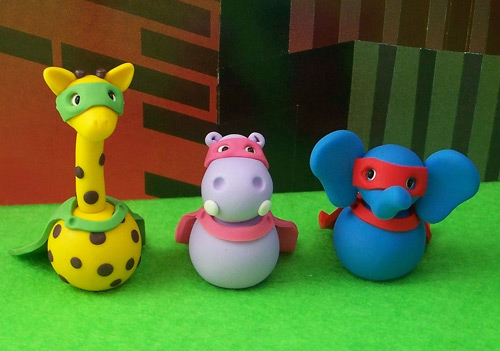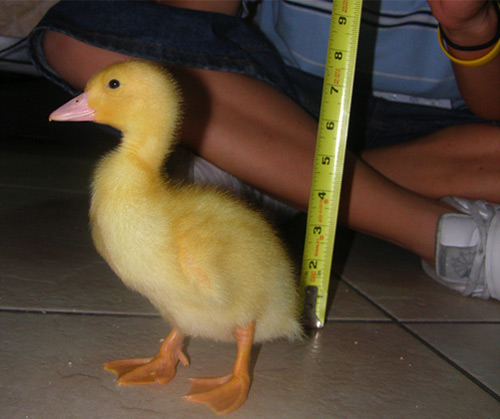Many magazine brands have blogs, but fail to realize the true potential of the medium. Often, these are good efforts, with good content, a fair level of traffic, and perhaps a comment every now and again.
Today, I want to look beyond just creating "a" blog, and share some strategies and tactics for creating a "great" blog.
For the tips below, I realize that:
You are not without a shortage of ideas, but may have hit a wall in terms of resources. You and your staff feel stretched to the max.
With that in mind, here are some tips to creating the BEST blog you can, and doing so with the resources you already have. I can’t give you an extra day in the week, but I hope I can outline a process that makes the best use of your time, with the highest return on investment.
- Focus on just one or two blogs.

Blogs are often something new not just for editors, but also for the readers of your brand. Launching 3-6 new blogs in a short time frame may be a way to signal that you value the medium, but it is often met with less than stellar results. My advice if you are just getting started with blogs, or haven’t yet created a superstar blog:Start with just one or two blogs, but make them exceptionally good.
Once you have created one or two successful blogs, then you should start expanding beyond that.
- Speak to CRITICAL needs of your audience.

Only choose a topic for your blog that focuses on the one thing that keeps your core readers up at night. Anything else is easy for them to ignore. No one knows your audience better than you, now is the time to use those years of experience to put a laser-like focus on a single thing that is the cause for heart conditions around your industry. What do they worry about? What do they gossip about over lunch? What is the topic that they are begging for solutions? That’s your new blog.You can further vet potential topics by leveraging web analytics from your website and newsletters to see what topics people click on. Many articles are "important" but not things that keep your readers up at night.
If needed, create a few test articles that gauge the interest level for your audience. Don’t just accept the first good idea that comes along – have the staff discuss it, then come back a week later to discuss it again. Even a tiny nuance changed in the given topic can be the difference between "good" and "great."
- Create a team, not just a blog.

It is not enough to just create a blog, it has to be worked into your overall editorial strategy. Likewise, everyone has very limited resources – you will have to address the elephant in the room – finding the time to do this well.With the suggestion of creating fewer blogs, I don’t mean devoting fewer resources. Rather, if you split the work among several staffers and/or external contributors, you may be able to create a much higher quality product and a great sense of teamwork, without burdening a single person with the entire load.
So, you may want to consider a structure like this:
- Person #1: Perhaps this is an editor on staff, or an external contributor, but this person is the face of the blog. They own it, their name is all over it, and they contribute much of the content. While I have seen plenty of group blogs work well, I see greater success when one person is more closely associated with it. For the sake of this example, let’s figure this person writes 3 posts a week for the blog.
- Persons #2, #3, #4: Have staff members who support this blog in various ways. This could take as little as an hour a week, or as much time as you feel is necessary. Some ways they can help:
- Feed ideas for blog entries
- Report metrics
- Find guest bloggers
- Find content (news items, images, videos, things to link to)
- Respond to comments
- Check other blogs and elsewhere on the web to see where you have been picked up
- Establishing relationships with other bloggers
- Persons #5 & #6: You can recruit guest bloggers – outside experts – to contribute regularly, but not have to support the entire blog. This new content helps make it easier for the main blogger, but gives the audience an easy to understand hierarchy for the writers. Perhaps a guest blogger updates the blog every Tuesday with a post on a specific topic. Now, the blog has 4 total posts a week. The people listed above can also assist this guest blogger by contributing ideas for what they should write about.
One of the biggest barriers to creating a great blog is that bloggers get lonely. Creating a team solves this. It also allows all staff members to understand blogging, without having to take complete ownership.
- Content of the highest quality is content that HELPS

Your blog content can’t just be opinions or stuff that didn’t fit into the rest of your news cycle. Your blog entries can be long or short, newsy or topical, personal or professional, etc. But it has to help readers with a core professional problem – or it has to speak to their passion.Create drafts of blog entries ahead of time, and share ideas with colleagues and friends in the industry. This not only makes the blog better, but also gives others a stake in its success.
- Create a schedule and content types.

No one wants to wake up everyday with the additional pressure of creating a new blog entry. So, create a weekly schedule, perhaps something like this:Monday: A long thoughtful piece that tackles a topic that readers really care about. This is a post that might have taken 3 drafts to write.
Wednesday: A news piece – focus on the one story that matters in the past week. Link to other reactions on the web, give reaction, flesh it out.
Friday: A fun post. Share a story, an anecdote, a funny video or image that will resonate with your industry. Share something personal, something about you or your staff. People will feel a deeper connection to you, and more likely than not, begin looking forward to this entry more than the others.
Over time, you can begin to fill in additional posts on Tuesdays and Thursdays, perhaps with guest bloggers, or additional content types, such as a video, or a question of the week.
Creating a schedule like this has two major benefits. First, it sets an expectation with the audience. They know when to check in with you and what to expect. Second, it breaks down this huge chore (creating a blog) into manageable little chunks. Perhaps you can take a single day each month to brainstorm ideas for the longer entries you are writing for Mondays. Throughout the month, you can collect ideas for your Friday post. Other staffers can feed you news items to fill in your Wednesday post.
- Create a marketing plan.

This can just be 4 bullet points, but give it some thought. If you are just launching the blog, pick your posts very carefully, and be sure they will convince readers that this blog is something unique and helpful. Launch with a few good posts in reserve that you will post in the first few days.Be sure to include it prominently on your website, in newsletters, and that it is consistently integrated into your other products. Consider doing "best of" feature articles that can be promoted elsewhere on the website.
- Involve your audience

This is about your audience and their needs. Find ways to include them – quotes, videos, photos, questions, guest blogs, linking to existing bloggers elsewhere on the web.Extend your blog beyond your website. Create a Twitter account for your brand, and send out links when you post a new blog. Create a Facebook and LinkedIn group, and connect your readers around this topic. If you are posting videos, create a channel on YouTube. Blur the line between your site and other social networking tools. This is a great way to engage readers further, and get feedback that you can use for future posts.
- Set goals and measure your performance.

I know this is scary – but it’s critical. Don’t go overboard, but sit down and set some reasonable goals, perhaps for the first 3 months out, it will look like this:Potential Audience Size: (uniques, visits, page views)
Engagement: (time spent, repeat visitors, bounce rate)
Community: (comments, anecdotal feedback)
Marketing: (inbound links, Google referrals, Twitter followers, Facebook friends)
Editorial focus: (top posts, search keywords)There are many ways to slice this – give me a call if you want to chat about web analytics (973-981-8882) and how to use them to measure performance and drive editorial strategy.
- Have a strategy.

I realize it is silly to put this last instead of first, but it’s Friday, everything can’t make sense. Sometimes, you have to let things evolve before you know what you even have. And that’s fine.Continue to develop your blogs as you get feedback, nudge your tactics, measure performance, and interact with your readers. Keep in mind that this is not just a "blog," this is a platform that can be leveraged in a number of ways.
Can this blog extend to a webcast, a panel discussion, a breakfast, a video series, an spin-off blog, a column in the magazine, a series of reports that can be aggregated later to a feature article?
The best bloggers are always evolving their blog and trying new things, constantly amazed in the ways that it morphs and extends itself to new territory.
Yes, you should have a strategy when you launch, but even if you don’t, take a breath after 3 months from the launch date, take the team out to lunch, and take apart what the blog is and where it can go.

Great post ! Bookmarked
Send Gifts to Srilanka, Flowers to Srilanka, Cakes and Chocolates to Sri Lanka and Colombo.
Wow! So much to take in after this post! I love what you said about speaking to the critical needs of your readers.
Cool Post
Thank you for sharing knowledge,, it is very useful for me who still need guidance in building a quality blog
dunia remaja
nich
Nice commentary – I loved the analysis ! Does anyone know if my assistant could get access to a fillable Wounded Warrior Handbook form to edit ?